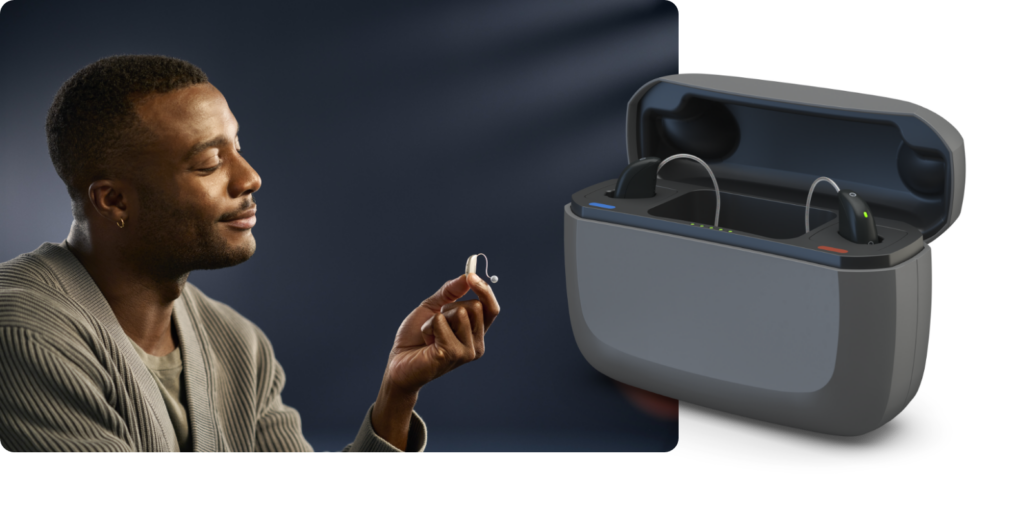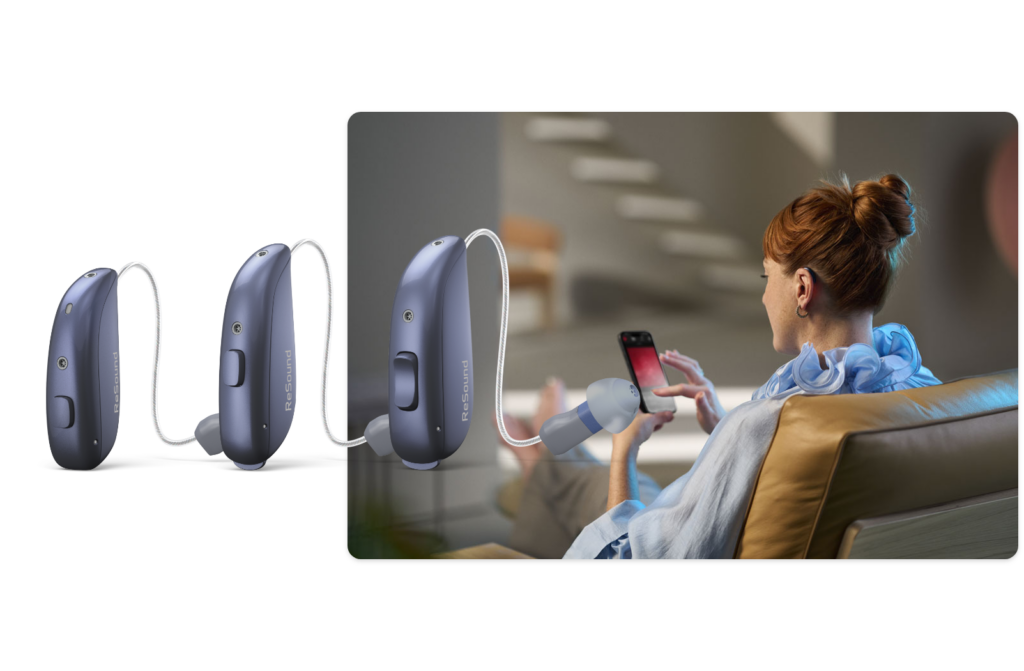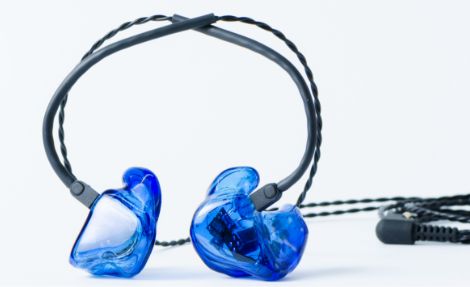Hearing Products
If you’ve recently found out you have hearing loss, you’ve likely talked about hearing aids with your hearing instrument specialist. These devices can change your life – if you find the right fit for your specific hearing loss and lifestyle needs. The hearing instrument specialists at Coastal Hearing Clinic can help you find your perfect solution. We carry all of the latest styles and technologies and will make personalized recommendations based on your hearing test results. Here’s a closer look at the products we carry.
Hearing Technology
Modern Solutions For All Types of Hearing Loss
We carry hearing aids that utilize the latest technology – from water-resistant models to devices with rechargeable batteries. We’ll make sure your new hearing aid includes the features and power you want.
Discover the benefits of Assistive Listening Devices (ALDs). Designed to complement hearing aids, ALDs enhance sound in challenging environments where traditional devices might fall short. Ideal for phone calls, TV watching, and in-person conversations, these devices include personal amplifiers, amplified telephones, and more, offering personalized hearing support in various settings.
More on Assistive Listening DevicesHearing aids come in various styles to cater to individual preferences and needs. Some common styles include behind-the-ear (BTE), in-the-ear (ITE), and completely-in-the-canal (CIC), each offering unique benefits in terms of comfort, visibility, and functionality. Whether you prefer a sleek, low-profile design or something a little more durable, we’ll help you find a model that suits your needs.
More on Hearing Aid StylesOTC hearing aids are an option for people with self-perceived, mild hearing loss. These devices are typically limited in personalization options, but can work for less complex cases of hearing loss.
More on Over-the-Counter (OTC) Hearing Aids

Hearing Product Guide
Curious About Hearing Technology, but Not Sure Where to Start?
With so many styles and options, it can be difficult to know which products will suit your needs. Our Consumer Guide to Hearing Aids provides an in-depth breakdown of the different types of hearing devices, as well as the technology available for all types of hearing loss.
Hearing Aid Manufacturers
Hearing Products Created by the Best in the Industry
From ReSound to Signia, we carry hearing aids from all of the top manufacturers in the industry. If you have a preference, we’ll make sure it’s met. If you don’t, we’ll make a personalized recommendation based on your style preferences and performance expectations.
Oticon Hearing Aids & Accessories
Oticon is a major hearing aid manufacturer that focuses on making products that help people hear more clearly and naturally. We carry a variety of Oticon products in enough styles to fit any preference.
View All ProductsPhonak Hearing Aids & Accessories
Phonak is another hearing aid brand that makes a variety of styles and technologies. The company focuses on delivering an effortless hearing experience that can suit the needs of any hearing loss situation, budget or preference.
View All ProductsReSound Hearing Aids & Accessories
ReSound makes intuitive, discreet hearing aids and accessories that utilize the latest technology. Their products may be able to help you differentiate sounds more effectively so you get a more natural hearing experience.
View All ProductsSignia Hearing Aids & Accessories
Signia’s hearing aids are designed to help you get more out of life. Their products leverage new technology to help you differentiate words in any environment. We can help you find a Signia hearing aid that meets whatever style preferences or budget you may have.
View All ProductsStarkey Hearing Aids & Accessories
Starkey makes hearing aids that work with the natural anatomy of your ear to help you interpret sounds more naturally. The company’s products may feel more comfortable than your alternatives because of this focus.
View All ProductsHearing Protection
Make Protection a Priority
Wearing hearing protection devices like earplugs can help you avoid future hearing loss. We carry specialized hearing protection like ear monitors for musicians, as well as generalized options that can work in any situation.
We care about the hearing you have lost, but we also care deeply about the hearing you have left! Hearing protection is extremely important and one of the most vital actions that can be taken to prevent hearing loss. At Coastal Hearing Clinic, we create custom hearing protection that is created to be uniquely yours.
More on Hearing Protection
Assistive Listening Technology
Additional Tools to Support Clear Communication
You don’t have to rely on hearing aids alone; assistive listening technology and compatible devices can help bring more clarity to conversations and are another great way to foster healthy communication and connections.





